History originally published in Pickup Van & 4WD September 1981
“it is particularly important that the tires be a very large section, generally much larger than the normal equipment… This being a secret of successfully traversing bad sand.”
This sentence is (a) a sample from an off-roaders handbook, (b) a quote from one of Dick Cepec’s catalogs, or (c) the AAA’s advice to cross-country motorists?
Believe it or not, (c) is the correct answer. In this day of interstate highways, off roading has become primarily a recreational pursuit. However, in the early days of motoring, almost any trip was a challenge against the terrain. Not only were there no superhighways, what roads that existed were often little more than trails. The ruts were either muddy or dusty, depending on the weather. Most modern automobiles, adapted is they are to smooth concrete ways, would find the going impossible. It would take an off-road vehicle – or a veteran automobile – to get through.
Advice to the early automobile explorer does have a familiar ring to the off roader. That’s not surprising, considering the similarity of ground covered. The quote in the first paragraph, for example, is from a 1910 American Automobile Association publication, this particular piece of advice being entitled “Practical Hints on Transcontinental Traveling.” Despite the title, the writer concentrated on the crossing of western mountains and deserts, assuming the reader was familiar with eastern conditions. East of the Mississippi, the traveler may find “some bad mud and less bad sand,” and only occasional need to be pulled by horses from deep sand “carelessly blundered into with too small tires.” Rivers were bridged and towns close together, gasoline was low-priced and relatively abundant, and lodging was readily available.
The west, however, the eastern traveler would find to be very different from home and from his preconceptions. Most of western driving, said the AAA, would become “an unending alteration of running through valleys and over summits, even the most desert areas being decidedly mountainous.” Valley areas, though, would often allow many miles of “ideal speeding,” (the word speeding not having become the pejorative it has today). “Indeed, there are tracts in Nevada, of hundreds of square miles of almost level ground of natural road material, across which the highways, improved only to the extent of occasional wheel tracks and signposts, will admit. He with the most powerful cars – the unexpected small gullies are a menace to be kept ever in mind by the driver unfamiliar with the road.”
Mountain grades would be another new experience for the easterner, disappointing none with their steepness. There would be upgrades to tax engine power and chassis traction ability, one was warned, followed by long downgrades unlike anything the easterner had ever before encountered. The novice was instructed in the art of engine braking. It was that, “or else learn to his sorrow that three or four hours of continuous downhill, dropping from three hundred to a thousand feet per mile, will not merely char brake linings but will absolutely burn the brakes out of the car, wearing the brake drums to shells, and heating them not only enough to blister the paint but even enough to burn the spokes loose.” Even watercooled brakes (!) and inorganic linings weren’t enough for such grades.
Long, steep grades weren’t the only hazard described, as the reader was also warned against “stair steps in the rocks on grades, excessively steep and abrupt small gullies, fords, patches of deep or very slippery mud, and deep ruts at the sides or high rocks in the middle-of-the-road.” And this is on the road!
The stair steps could require desperate action. “(They), on upgrades, can in some cases be surmounted with a low-powered car only by stopping, placing the low gear in mesh, speeding the engine, and then abruptly slamming in the clutch, trusting to the good construction to stand the stresses on tires, springs and transmission.” For bad gullies, one was to rush through in low, slowing only for an instant at the bottom of the descent if the rise was very abrupt.
Speed was the method for hard-bottom fords. The theory was that one would short out his ignition regardless of how slow or fast he drove, so one had best enter as quickly as possible, making the other side on momentum if necessary. Drying out could take hours, and naturally “is more conveniently accomplished ashore than afloat.” Fords with very sandy bottoms or with a steep bank on the far side should be rushed in one of the lower gears, while a ford with a rough bed of rocks must be gone through slowly, so as to not break anything. It was suggested that particularly bad fords or gullies could be moderated by filling them with sagebrush. The AAA singled out Twin Springs, Nevada, as having a notoriously bad ford.
Terrain such as this, said the AAA, would require the easterner to modify his automobile. One change was that any linkage between the emergency handbrake and the clutch (declutching when the brakes are applied, an early method of simplifying the driving task) be disconnected. Otherwise, one could not simultaneously use the brake and the engine’s compression braking on long downgrades. Drivers would have to learn to brake and clutch at the same time.
Another change was to “magnetic ignition of some type.” Most automotive ignition systems of the day were powered by battery only, periodically recharged. Generators were still in the future. Dry cells, which were not readily available out west anyway, deteriorated rapidly in the dry western air, and thus would not do. Nor would storage batteries suffice, as recharging facilities were rare. That magneto was the solution.
A preparation which might seem a little odd to today’s sensibilities was required of anyone traveling on roads maintained by the automobile stage lines when serving the mining camps. “Horse trespassing” on them was a penitentiary offense, horses’ hooves being deleterious to the roadbed, so sagebrush grew high between the wheel ruts. Exposed gasoline and water drain cocks could be opened by whipping brush. The solution: Safety wire them shut.
Even with this precaution against losing fuel, extra gasoline was usually required to cover the long distances between settlements, the standard tanks not being adequate. Gasoline, at that time in the west, was commonly sold in five-gallon cans, two cans in a wooden case. These could be fastened to the running boards or elsewhere, taking care that they be well-secured against seam-splitting rattling. The same sort of cans also could be used to carry extra water for the cooling system.
In addition to the carrying of extra water, advice applicable even today was to keep the cooling system in good condition. In climbing along grades, slipping fan belts, dirt accumulated on the inside or outside of the radiator, or an “ineffective circulating pump” would lead to overheating problems and delays then as surely as now.
Clutches were another sore spot, being much weaker than modern clutches. “The safeguard, especially with leather-faced cone clutches, is to never let slipping began, as once started it rapidly progresses to the ruin of the facing.” It was advised that a small can of dry-litharge, a lead-based friction agent, be carried in the toolbox for clutch emergencies.
Of course, tires required special care and maintenance as well as selection. Spare tires and an abundance of extra tubes were necessities. Cemented patches, usually workable back east, were dismissed as unreliable under the hot desert conditions. It was also advisable to have a piece of canvas tarpaulin or gunnysack on hand to put under the tires when stuck in sand. Of course, advised the AAA sagely, it was best not to get stuck in the first place, but if one became so entrapped, “(the) car being runs slowly on the low gear, the person who places the canvas can by a little hustling easily pick it up and regain his seat.” Or he could also fall under the car and get run over miles from nowhere. For such situations (being stuck, not run over), one could also pack the contemporaneous equivalent of today’s ubiquitous winch – several hundred feet of 3/4-inch rope with a couple of double-sheave pulleys.
For improved durability, it was recommended that “all the spring-eye and shackle bearings should be provided with oil holes, or better, with grease cups, if not originally so fitted. Springs of anything less than the most superior quality will be sure to give troubled through breakage, a danger that can be reduced by the fitting of good shock absorbers.” Desirable but not essential where an aneroid barometer for indicating altitudes, a gradeometer, field glasses, compass, and camera. A speedometer was thought to be a nice extra, too.
Good headlamps, then usually owner-installed items rather than original equipment, were recommended, but as a camping rather than a driving aid. Night running was not recommended, but not because of hard-to-see road hazards. Rather, one could easily get lost driving in the dark, roads being little more than wagon tracks and poorly marked at that.
Finally, “it almost goes without saying,” but the AAA said it anyway, “that at least one of the parties should be not only a good driver, but a thorough mechanic, resourceful enough to improvise any possible repair.” Tools and spare parts would be needed, including nuts and bolts, wire and cords, rivets and pieces of sheet metal, extra spring leaves, and so forth. A gasoline blowtorch and soldering outfit were seen to be most important. A breast drill would be a handy item. But cited as the ultimate guarantee against being stranded by breakdown was traveling with another car.
Logistics presented his own special problems back then and out there. Gasoline was much more expensive in the desert country, costing as much as 40 to 60 cents per gallon, a small fortune in times of dollar-a-day wages. It was suggested that gasoline could be bought and shipped ahead for less than it could be purchased at desert settlements – a bit drastic, but perhaps one way to beat the “Last Chance” gas stations operators of today. But if gasoline was expensive, at least it was available. The AAA warned that good-quality oil was almost impossible to find, and one would do well to lay in a supply sufficient for the entire journey.
One could, by planning carefully and avoiding delays, arrange for lodging, if only at what was described as some sort of habitation. If one desired freedom from schedules and wanted to save money on what was likely to be an unsavory situation anyway, packing along camping gear was advised. This meant primarily a bedroll, condensed food, and an alcohol stove. A tent was not seen as necessary, as rain was uncommon “during the season when motoring is practicable.” Should showers occur, that tarpaulin used under the wheels to get unstuck from sand could also be used for shelter.
The task of the navigator was not an easy one, and the risk involved in running astray was high. The traveler was advised to verify his route at every opportunity. Teamsters could be counted on for accurate directions; so could local inhabitants, unlike the eastern counterparts who were disparaged for their “rural ignorance of local geography.” The westerners, it was said, could give directions with mile estimates that would be matched exactly by the car’s odometer. Maps were also recommended. “The post-route maps issued by the government will be helpful, while the topographic maps are particularly useful to the extent that they are to be had for the localities traversed.”
As for the passengers, the AAA recommended that the car be fitted with a top for some protection, that a two-gallon canteen for each traveler be carried, and that everyone thoroughly grease his face, neck, and hands with cold cream before each day’s ride. Although this last was rather disagreeable, it was deemed necessary protection against alkali dust which, if allowed to enter the pores of even the most callous complexion, would cause “violent acute eczemas that can be counted upon to spoil all enjoyment for a week to 10 days.”
Desert dust and other hardships considered, only individuals of stamina were advised to make such a trip. “By this it is not meant to imply, however,” the AAA counseled, “that any particular physical endurance is essential, the writer knowing several instances in which frail women and small children have made transcontinental automobile trips with marked improvement in health. This doubtless is to be accounted for by the practical out-of-door life such touring enforces in climate of the utmost healthfulness.” In other words, you should be physically fit to start, but if you aren’t, you probably would be by the time you finish.
All-in-all, foresight, preparation, and resourcefulness were as important with the early automobile tourer as with today’s off roader. For both, if the adventure into remote and difficult areas that’s the attraction, the getting through and bragging about it later. In fact, with their enterprising spirit and pioneering drive, the terrain challenged and conquered, the early automobilists share more in common with the modern off roader than the highway-bound crushed-velour cruisers.
They challenged the country.
Sometimes they won, sometimes they lost.
They were the first off roaders.
Published out of the same offices in Newport Beach, California, as Road & Track—did they share the ampersand?—there were familiar names on the masthead to readers of the venerable car magazine, Editor Jon F. Thompson in particular. Unfortunately, this was my only article for the magazine, although I would become a regular contributor to Road & Track’s later off-road magazine Open Road.




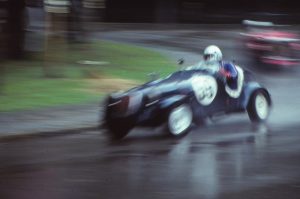
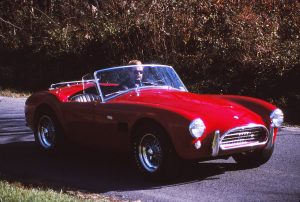
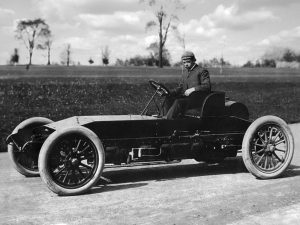
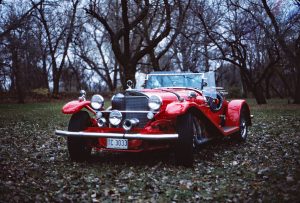
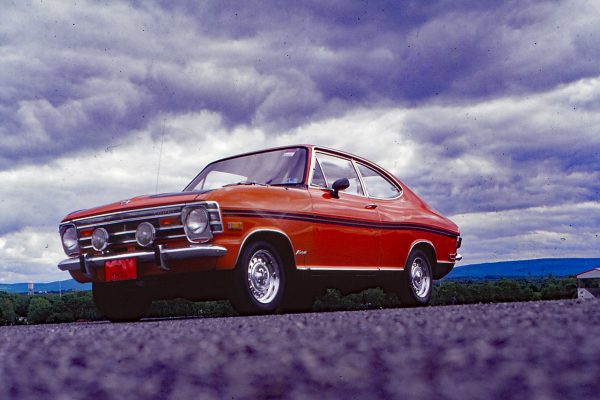
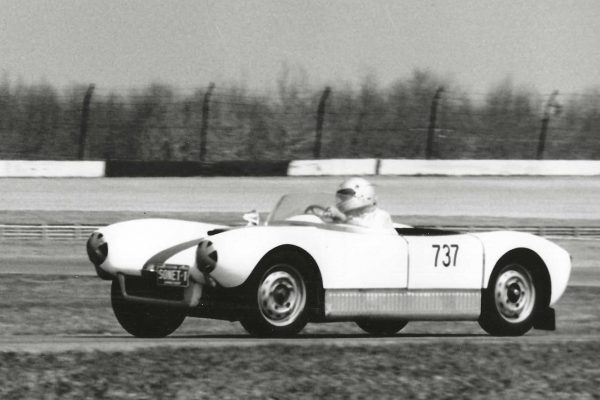
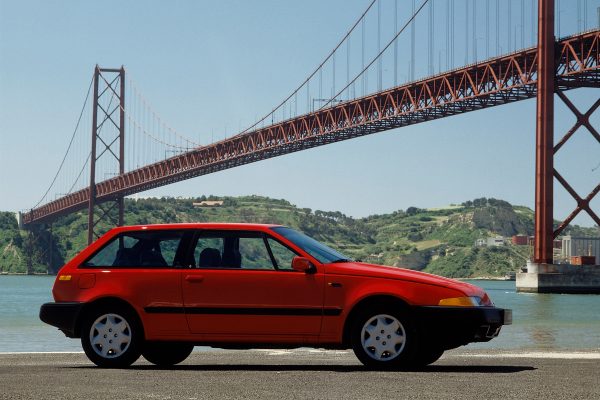
What Do You Think?
You must be logged in to post a comment.